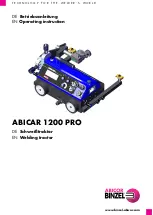
Page 4
DESIGN
INTRODUCTION
The PulsaCoil A-Class shown schematically above is designed to provide an improved
method of supplying mains pressure hot water when used with a suitable off peak
electric supply/tariff.
An important feature of the concept is that hot water can be supplied directly from
the mains at conventional fl ow rates without the need for temperature and pressure
relief safety valves or expansion vessels. This is achieved by passing the mains water
through a plate heat exchanger. The outlet temperature of the domestic hot water is
maintained by a printed circuit control board, which controls the speed of the pump
circulating the primary water from the store through the plate heat exchanger.
The Building Regulations L1A: New dwellings/L1B: Existing dwellings and the
requirements set out in the Domestic Heating Compliance Guide specify that “where
the mains water hardness exceeds 200ppm provision should be made to treat the
feed water to water heaters and the hot water circuit of combination boilers to reduce
the rate of accumulation of lime scale”.
To comply with this requirement the hardness of the mains water should be checked by
the installer and if necessary the optional factory fi tted in-line scale inhibitor should be
specifi ed at the time of order for hardness levels between 200 and 300 ppm (mg/l).
Where the water is very hard ie 300ppm (mg/l) and above the optional polyphosphate
type, inhibitor should be specifi ed at the time of order. However, this will need to be
fi tted by the installer at a suitable point in the cold water supply to the appliance.
THE PRINTED CIRCUIT BOARD INCORPORATES
THE FACILITY TO AUTOMATICALLY RUN
THE D.H.W. PRIMARY PUMP FOR ABOUT
3 SECONDS EVERY 30 HOURS TO HELP
PREVENT IT STICKING. FOR THIS REASON
WE WOULD RECOMMEND THAT ONCE THE
APPLIANCE IS INSTALLED IT SHOULD BE
COMMISSIONED AND THE ELECTRICITY LEFT
ON TO THE APPLIANCE.
Because this product does not require a safety
discharge from a temperature and pressure
relief valve, any installations will be easy to
incorporate into the building and will not suffer
from the problems associated with using PVCu
soil stacks to take the discharge from unvented
cylinders.
The heat losses from thermal stores should not
be directly compared with heat losses from
unvented or vented cylinders because they are
treated differently in SAP. The SAP calculator
takes account of the type of store and various
correction factors are included to refl ect the
different ways that the hot water and heating
operates.
Figure 1.1
Schematic Hydraulic Arrangement
1. Bottom (Off-Peak) immersion heater
(1H_1)
2. Top (On-Peak) immersion heater (IH_2)
3. Overheat sensor pocket (Sensor S1/S2)
4. Top/middle sensor pocket (Sensor S6 for
IH_2)
5. Bottom sensor pocket (Sensor S5 for
IH_1)
6. Cold water inlet sensor, S3
7. DHW outlet sensor, S4
8. Grundfos UPR 15-50 pump
9. Filter & flow regulator
10. Plate heat exchanger
11. Pump isolating valve
12. Non-Return valve
13. Pre-expansion chamber
14. Open vent
15. Cold Feed
16. CW inlet
17. HW outlet
18. Drain
19. Return from PHE to store
20. Flow from store to PHE
Cistern can be provided
with a ballvalve and
overflow connector as an
optional extra if required.
Appliance
case
Top up cistern
7, S4
6, S3
PULSACOIL
A-CLASS
4, S6
5, S5
19
18
12
16
10
17
11
11
8
9
20
14
15
3, S1/S2
2
1
13
Содержание PulsaCoil 145
Страница 28: ...Page 28 APPENDIX APPENDIX C ...
Страница 30: ...Page 30 TERMS AND CONDITIONS ...
Страница 31: ...Page 31 TERMS AND CONDITIONS ...
Страница 32: ...Thecodeofpracticefortheinstallation commissioning servicingofcentralheatingsystems ...





































